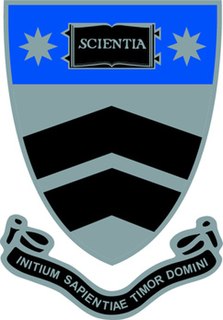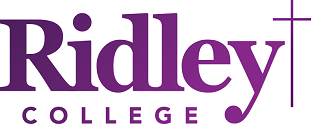
Monash University is a public research university based in Melbourne, Australia. Founded in 1958, it is the second oldest university in the State of Victoria. The university has a number of campuses, four of which are in Victoria, and one in Malaysia. Monash also has a research and teaching centre in Prato, Italy, a graduate research school in Mumbai, India and a graduate school in Suzhou, China. Monash University courses are also delivered at other locations, including South Africa.

Parkville is an inner-city suburb of Melbourne, Victoria, Australia, 3 km north of Melbourne's Central Business District. Its local government areas are the Cities of Melbourne and Moreland. At the 2016 Census, Parkville had a population of 7,409.

RMIT University is an Australian public research university in Melbourne, Victoria.

Trinity College is the oldest residential college of the University of Melbourne in Australia. The college was founded in 1872 on a site granted to the Church of England by the university. In addition to its resident community of 300 University of Melbourne and University of Divinity students, Trinity's programs includes Trinity College Foundation Studies, which prepares around 1700 international students for admission to the University of Melbourne annually; the Trinity College Theological School, an Anglican theological college, now a college of the University of Divinity; and the Trinity Institute, which runs summer and winter schools for young leaders, as well as other shorter learning and leadership programs.

Carlton is an inner-northern suburb of Melbourne, Australia, immediately adjoining Melbourne's Central Business District. Its local government area is the City of Melbourne.

East Melbourne is an inner suburb of Melbourne, Australia, 2 km east of Melbourne's Central Business District. Its local government area is the City of Melbourne.
Fender Katsalidis Architects (FKA) is an architecture firm in Melbourne, Victoria, Australia. Founded by Karl Fender and Nonda Katsalidis, the firm has been notable since the early 1990s, producing many landmark buildings in Melbourne and other Australian cities and also in Southeast Asia. The firm was first established as Nation Fender and, since 1996, as Nation Fender Katsalidis.

The University of Divinity is an Australian collegiate university of specialisation in divinity. It is constituted by eleven theological colleges from eight denominations. The University of Divinity is the direct successor of the second oldest degree-granting authority in the State of Victoria the Melbourne College of Divinity. The university's chancery and administration are located in Kew, a suburb of Melbourne in the state of Victoria.

The Royal Melbourne Hospital (RMH), located in Parkville, Victoria, an inner suburb of Melbourne, is one of Australia's leading public hospitals. It is a major teaching hospital for tertiary health care with a reputation in clinical research. The hospital is managed as part of Melbourne Health which comprises the Royal Melbourne Hospital, North West Dialysis Service and North Western Mental Health. The Melbourne Health Chief Executive is Christine Kilpatrick.

New College, University of New South Wales is a residential college, located in the UNSW campus in Sydney. The college is organised around on Anglican principles. About 250 undergraduate students, both local and international and of a variety of backgrounds, live in the original college building, and 315 graduate students are housed in the nearby New College Village. New College is also home to the Centre for Christian Apologetics, Scholarship and Education (CASE) which specialises in Christian apologetics.

The University High School is a government-funded co-educational secondary day school, located in the Melbourne suburb of Parkville, Victoria, Australia. As of 2016, 1,425 students attended the school.

Graduate House is a residential college and an academic and professional meeting centre in Melbourne as well as a membership association for graduates of all universities across the world.

Monash University, Parkville campus is a campus of Monash University, located in Parkville, Victoria, Australia. It is home to the Faculty of Pharmacy and Pharmaceutical Sciences, previously known as the Victorian College of Pharmacy. A centre of research and teaching, it is particularly well known for its research in drug development and formulation science, including the discovery and development of the world's first successful anti-influenza drug, Relenza. In international rankings, it is ranked as the number one school of pharmacy and pharmacology in Australia and the equal fourth best in the world alongside King's College London.

Ridley College, formerly known as Ridley Melbourne, is a Christian theological college in the parklands of central Melbourne. Established in 1910, it has an evangelical foundation and outlook and is affiliated with the Australian College of Theology and the Anglican Church of Australia. The college offers on-campus and distance learning and provides training for various Christian ministries in a range of contexts.

St Mary's College is a medium-sized residential college affiliated with the University of Melbourne. It was founded on and still practices the Catholic tradition.
Gavin Geoffrey Souter AO is an Australian journalist and historian.

Frederick Romberg,, , was a Swiss-trained architect who migrated to Australia in 1938, and became a leading figure in the development of Modernism.

Cathedral College, East Melbourne was an all-boy, Catholic high school, run by the Congregation of Christian Brothers, and located on Victoria Parade, at the intersection of Eades Street, in East Melbourne, Victoria, Australia. It was on the former site of the Christian Brother's school, Parade College, which had been relocated to Bundoora in 1968.






















